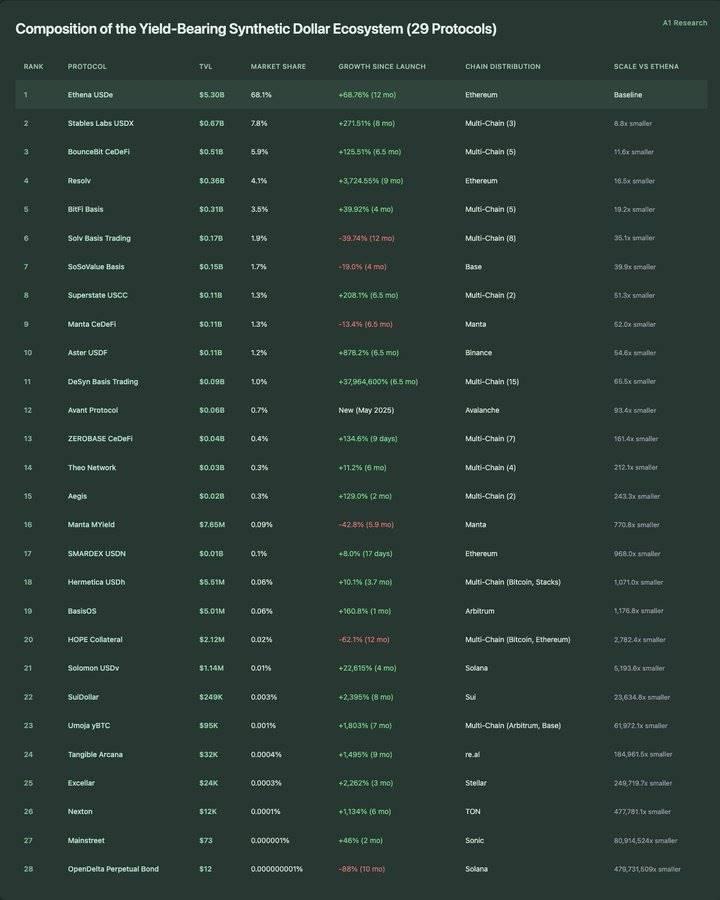This article will delve into the operation of this capital chain, exit mechanisms, and risk control designs of Aave and Ethena. However, understanding the mechanism is just the first step. The real advanced skill lies in upgrading the analysis framework. We often use data analysis tools (like Dune) to review the "past", but what's missing is how to see the various possibilities of the "future" and truly achieve this - first defining risk boundaries, then discussing returns.
How Arbitrage Operates: From "Yield Side" to "System Side"
Let's first look at this arbitrage path: depositing eUSDe or sUSDe (sUSDe is the staked eUSDe with native yield) on Aave,borrowing stablecoins, then buying YT/PT on Pendle. YT corresponds to future income, while PT, having stripped away income, can always be bought at a discount and redeemed at 1:1 upon maturity, earning the difference. Of course, the real "big ticket" is external incentives like Ethena points.
These obtained PTs, since they can be used as collateral on Aave,become the perfect starting point for circular lending: "Pledge PT → Borrow stablecoins → Buy PT/YT → Re-pledge". This is done to leverage relatively certain income to chase high-elasticity returns like Ethena points.
How does this capital chain rewrite the lending market?
Aave's Exposure and Second-Order Effects:USDe-backed assets gradually became mainstream collateral on Aave, with share rising toabout 43.5%, directly pushing up utilization of mainstream stablecoins USDT/USDC.
Crowded Borrowing:After introducing USDe eMode for PT collateral, USDe borrowing scale reachedabout $370 million, of whichabout $220 million (≈60%) serves leveraged PT strategies, with utilization rate soaring from about 50% toabout 80%.
Concentration and Re-collateralization:USDe supply on Aave is highly concentrated, with the top two entities accounting for >61%. This concentration, combined with circular leverage, amplifies returns but also increases system fragility.
The rule here is simple: The more attractive the yield, the more crowded the cycle, the more sensitive the entire system becomes. Any tiny fluctuation in price, interest rates, or liquidity will be mercilessly amplified by this leverage chain.
Note: The core on-chain data cited in this article is primarily based on a report published by Chaos Labs on July 17, 2025, and related market observations. As on-chain data is dynamically changing, readers are advised to check the latest information through relevant data analysis platforms.
Why "Exit" Becomes Difficult: Pendle's Structural Constraints
So, how to exit? When deleveraging or closing the aforementioned position, there are two main paths:
Market Exit:Selling PT/YT before maturity and converting back to stablecoins to repay and unwind.
Exit at Maturity:Holding PT until maturity, redeeming 1:1 with underlying assets to repay. This path is slower but more stable during market volatility.
Why does exit become difficult? The difficulty mainly comes from two structural constraints of Pendle:
Fixed Term:PT cannot be directly redeemed before maturity, only sold on the secondary market. To "quickly deleverage", you must rely on the secondary market's mood, facing both depth and price volatility challenges.
AMM's "Implied Yield Rate Interval":Pendle's AMM is most efficient within a preset implied yield rate interval. Once market sentiment causes yield rate pricing to exceed this interval, the AMM may "deactivate", with trades only possible on thinner order books, dramatically increasing slippage and liquidation risks. To prevent risk spillover, protocols like Aave deploy PT risk oracles: when PT price drops to a certain bottom price, the market is directly frozen. This avoids bad debt but also means you can't sell PT short-term, only waiting for market recovery or holding until maturity.
So, exit is usually not difficult during stable market conditions, but when the market begins repricing and liquidity becomes crowded, exit becomes the main friction point, requiring advance preparation.
Aave's "Brake and Buffer": Making Deleveraging Orderly and Controllable
Facing such structural friction, how do lending protocols (like Aave) control risks? They have a built-in "brake and buffer" mechanism:
Freeze and Bottom Price Mechanism:If PT price touches and maintains the oracle's bottom price, related markets can be frozen until maturity; upon maturity, PT naturally breaks down into base assets for safe settlement/release, minimizing liquidity misalignment from fixed-term structures.
Internalized Liquidation:In extreme cases, liquidation rewards are set to 0, first forming a buffer then disposing of collateral in stages: USDe to be sold secondary after liquidity recovers, PT held until maturity, avoiding passive selling on thin secondary market order books that would amplify slippage.
Whitelist Redemption:If the lending protocol obtains Ethena's whitelist, it can bypass the secondary market and directly redeem underlying stablecoins with USDe, reducing impact and improving recovery.
Peripheral Tool Boundaries:When USDe liquidity is temporarily tight, Debt Swap can exchange USDe-denominated debt for USDT/USDC; but constrained by E-mode configuration, migration has thresholds and steps, requiring more sufficient margin.
Ethena's "Adaptive Substrate": Support Structure and Custody Isolation
While lending protocols have "brakes", the asset support side needs Ethena's "automatic transmission" to absorb shocks.
In support structure and funding rate status:When funding rates drop or turn negative, Ethena reduces hedging exposure and increases stablecoin support; in mid-May 2024, stablecoin proportion briefly reached ~76.3%, later falling to ~50% area, still higher than previous years, able to actively decompress during negative fee periods.
Further, from buffer capacity perspective:In extreme LST confiscation scenarios, the net impact on overall USDe support is estimated at ~0.304%; the $60 million reserve is sufficient to absorb such shocks (only about 27%), thus the substantial impact on anchoring and payment is controllable.
Asset Custody and Isolation is a Key Link: Ethena's assets are not directly stored in the exchange, but are settled and isolated through third-party custodians (such as Copper, Ceffu). This means that even if the exchange itself encounters operational or solvency issues, these assets used as collateral remain independently owned and protected. Under this isolation architecture, an efficient emergency process can be implemented: if the exchange is interrupted, the custodian can invalidate unsettled positions after missing a certain settlement round and release the collateral, helping Ethena quickly migrate hedging positions to other exchanges, thereby greatly shortening the risk exposure window.






